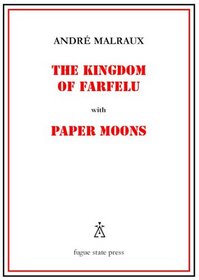Search -
The Kingdom of Farfelu, with Paper Moons
The Kingdom of Farfelu with Paper Moons
Author:
The first English translations of André Malraux's two most surprising works of fiction: the voluptuous surrealist novella The Kingdom of Farfelu (1928), and "Paper Moons," a ferociously absurdist story from 1921. Translation by National Poetry Series winner W.B. Keckler. — We tend to remember Andre Malraux?s life in four stages: as the eng... more »
Author:
The first English translations of André Malraux's two most surprising works of fiction: the voluptuous surrealist novella The Kingdom of Farfelu (1928), and "Paper Moons," a ferociously absurdist story from 1921. Translation by National Poetry Series winner W.B. Keckler. — We tend to remember Andre Malraux?s life in four stages: as the eng... more »
ISBN-13: 9781879193130
ISBN-10: 1879193132
Pages: 100
Rating: ?
ISBN-10: 1879193132
Pages: 100
Rating: ?
0 stars, based on 0 rating
Genres:
- Literature & Fiction >> General >> Contemporary
- Science Fiction & Fantasy >> Fantasy >> Anthologies
- Science Fiction & Fantasy >> Fantasy >> General




